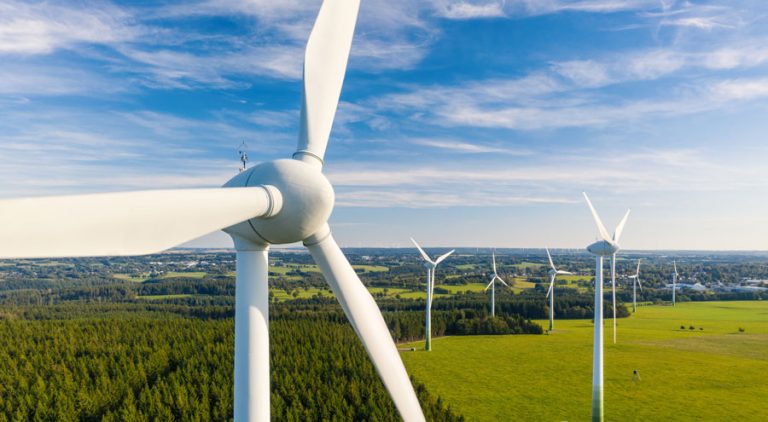
Principles of Wind Turbines
Instead of using electricity to create wind like a fan, a wind turbine uses wind to generate electricity. It usually consists of a tall tower, a rotating set of blades, and a generator. Wind turbines work by using the kinetic energy of the wind to push the blades to rotate, which in turn drives the generator to produce electricity. Typically, when the wind blows over the blades, it creates a thrust that causes the blades to rotate, and the rotation of the blades drives the rotor of the generator into motion, which spins in a magnetic field to produce an electric current that ultimately converts mechanical energy into electrical energy.
Wind Turbine Speed
Wind flow patterns and speeds vary greatly from place to place and are influenced by differences in bodies of water, vegetation and topography. Humans utilize this wind flow or motion energy for many things: sailing, flying kites, and even generating electricity. When a breeze blows, the blades rotate, generating kinetic energy. When the blades rotate in this way, they then also turn the shaft in the nacelle, where a generator converts this kinetic energy into electricity. Wind turbines typically operate at speeds between 7 mph (11 km/h) and 56 mph (90 km/h). Efficiency usually reaches its maximum around 18 mph (29 km/h), with maximum output at 27 mph (43 km/h).
Wind farms are often built where the wind is strongest to maximize the amount of electricity generated. From large wind farms that generate electricity to smaller turbines that power individual homes, wind turbines around the world produce clean electricity to meet a wide range of power needs. Most onshore wind turbines have a capacity of 2-3 megawatts (MW) and can generate more than 6 million kilowatt-hours of electricity per year. This is enough to meet the electricity needs of approximately 1,500 average households. Within certain limits, the faster the wind speed, the more electricity is generated. When wind speeds are doubled, the amount of electricity generated can increase by up to eight times. However, if the wind is too strong, the turbine automatically shuts down to avoid damage.
Types of wind turbines
Depending on the orientation of the rotor, large and small turbines can be categorized into two basic types: horizontal axis turbines and vertical axis turbines.
Horizontal axis wind turbine (HAWT): the most common type, the axis of rotation is parallel to the ground. Its blades look much like an airplane propeller. Most turbines have three blades, and the taller the turbine and the longer the blades, the more electricity is usually generated.
Vertical Axis Wind Turbine (VAWT): The axis of rotation is perpendicular to the ground and is less common, but may be more efficient in some specialized applications. Vertical axis turbines look more like egg beaters; these turbines have blades mounted on the top and bottom of a vertical rotor. Vertical axis turbines are less common today because they do not perform as well as horizontal turbines.
Advantages of wind turbines
Clean energy: Wind is an unlimited resource that does not run out and can be utilized over time. Wind power produces no greenhouse gas emissions, reducing environmental pollution and helping to mitigate climate change.
Low operating costs: Once installed, wind turbines are relatively inexpensive to operate and maintain.
Adaptable: wind turbines can be distributed over a wide geographical area and are suitable for different environmental conditions.
Disadvantages of wind turbines
Unstable: Wind power generation relies on wind speed, which is variable, so the amount of power generated is unstable and needs to be supplemented with energy storage systems or other energy sources.
High initial cost: The initial cost of installing a wind turbine is high, including manufacturing, transportation and installation costs. Wind turbines require more space, especially for large wind farms.
Ecological impacts: There can be negative impacts on wildlife such as birds and bats, sometimes affecting their habitats.
Wind turbines play an important role in driving the global transition to renewable energy, with benefits such as cleanliness, renewability and low operating costs making them an important energy option. However, the intermittency, high initial cost and potential environmental impacts of wind turbines still need to be overcome through technological advances and policy support. With the development of technology and the increasing demand for renewable energy, the application of wind power will become more and more promising.
